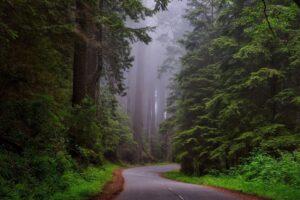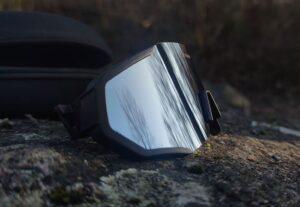When we think of the word ‘primitive’, the word ‘ancient’ comes to mind as the perfect synonym. The word primitive suggests the early stages of development in something, whether we are discussing humanity or another species. But what is primitive camping?
As the name suggests, primitive camping is the act of camping as it was done without the amenities of modern times. This means that in order to engage in primitive camping, you will abstain from the usage of man-made amenities such as modern toilets, smart phones, trash cans, cabins, or running water.
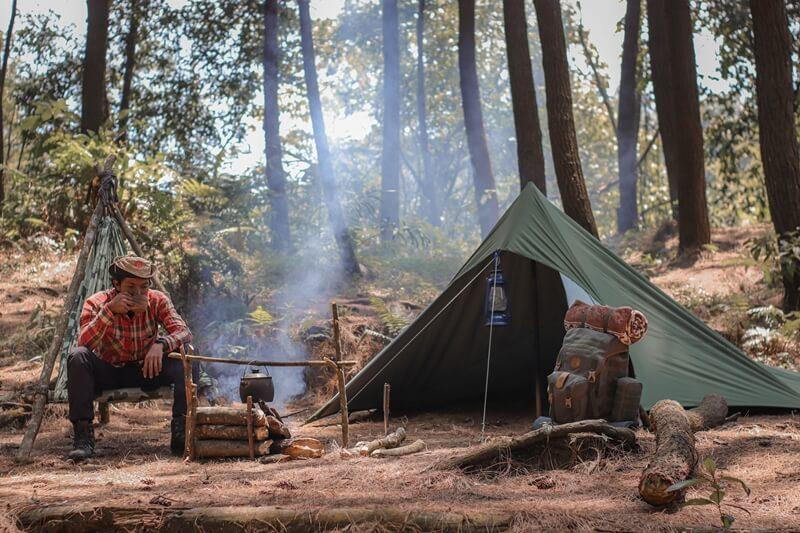
Those that like to go primitive camping often travel farther out from society in order to embrace the great outdoors and the experience of life without modern interventions. Let’s discuss more specifically how your camping experience will differ when going primitive camping.
How Do You Start Primitive Camping?
If you have never gone camping before without access to man-made amenities, it is safe to say that there is plenty of research to be done in your future – but don’t be intimidated! With some quick swaps to your gear and some wilderness safety knowledge in your tool belt, you will be able to have an amazing outdoor experience while primitive camping.
Researching your campsite before you begin camping is absolutely essential. You will need to know your destination and the wildlife that you may encounter. As well, being knowledgeable on the amenities that are in the area in case of an emergency can make a huge difference in your peace of mind while primitive camping.
As well, beginning to consider primitive camping may require that you make some investments upfront in order to stay safe and prepared in the great outdoors. If you are used to campsites where you use the many amenities of the modern age, you may need to make significant adjustments to your existing camping gear in order to experience primitive camping. These swaps can be a little more on the expensive side, depending on what gear you already have.
What Gear is Needed for Primitive Camping?
In order to be comfortable while primitive camping without the amenities of other campsites that you may be used to, there are certain supplies that are non-negotiable.
- A reliable tent
- Potable water or water filtration system
- Food (enough of it)
- Printed information of the campground/area
- Toilet paper
- Extra changes of clothes
- First aid supplies
- Permits (if you need them)
The Most Important Gear Changes
Now that we’ve discussed that there is likely to be some changes that you will need to make to your gear, let’s go over the specifics.
Water
Water is not just for drinking! You may need clean water for cooking, teeth brushing, and even showering depending on how long you are planning to be in the wilderness while primitive camping.
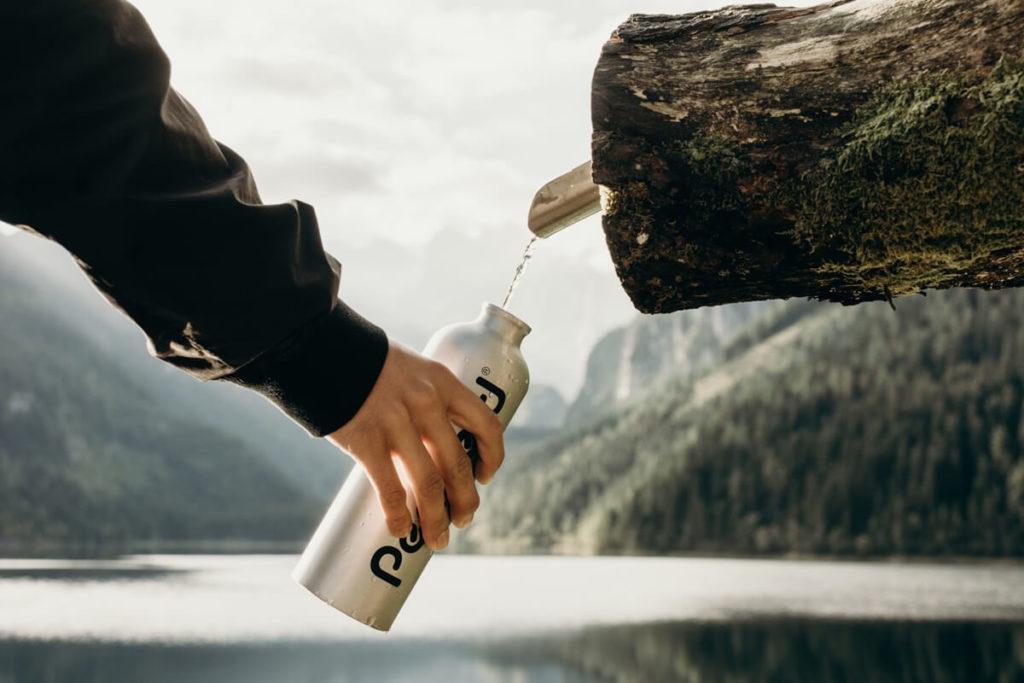
Without running water, your first priority will be to research your options for water — whether you decide on bringing potable water with you or purchasing a water filtration system. Either of these options are good options for having clean water while primitive camping, but which one you pick will depend on your campground and your access to fresh water.
Food
Food supplies are also necessary. Depending on the length of your trip, you may be able to pre-pack the food that you will need to sustain yourself while primitive camping. You should keep in mind that you will want to overpack food, in order to make sure that you truly have enough to eat!

As far as new supplies and gear goes, you may want to consider investing in a camp stove in order to cook hot meals, boil water or make some coffee in the great outdoors. This addition to your primitive camping gear can help you to feel a little more authentic in your experience rather than pre-packing your meals.
Permits
Speaking of fire, if you are planning on starting a fire during your primitive camping experience, you may need a permit to do so. This goes hand-in-hand with researching your desired campsite. Areas that are especially at-risk of wildfires are very strict with their permits and you will need to know if you need one.
It is absolutely imperative that you obtain the necessary permits for primitive camping or campfires if your location requires them. Not doing so can quickly sour your primitive camping trip.
Where Should You Go Primitive Camping?
There are many suggestions for primitive camping all around the United States, in all 50 states. You can go primitive camping in national parks or even just outside cities that may be near you! A quick Google search can reveal thousands of primitive camping locations that are easily accessible to most Americans.
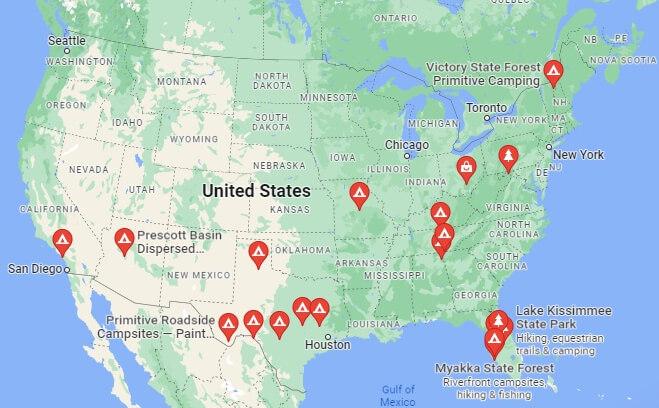
Let’s go over three types of easily accessible primitive camping locations that are highly recommended by primitive campers due to their ease of use.
1. National Parks
National parks are more limited than the other two options on this list, as there is a little bit more red tape to maneuver when planning your trip. Some national parks will allow you to primitive camp wherever you want, while others have designated zones where you are allowed to go primitive camping. You will also likely need a permit for primitive camping in a national park.
Despite this extra red tape, national parks are extremely good options for prospective primitive campers. Many of them have modern amenities nearby if you need to get a break from nature and go take a trip to use a real toilet. As well, national parks are extremely beautiful.
2. Bureau of Land Management Land (BLM)
The most straightforward option on this short list is land owned by the Bureau of Land Management. BLM land is open for primitive camping as long as you only stay for two weeks on BLM land. As well, they are pretty affordable, and their permitting process is fairly simple. BLM typically refers to primitive camping as “dispersed camping”.
3. U.S National Forests
Similar to BLM land, national forests typically allow primitive camping and have very straightforward guidelines for doing so. Just like BLM, the U.S. Forest Service calls primitive camping “dispersed camping”. There are many different sites for you to choose from all over the country.
Conclusion
Now that you have all of the essential information on primitive camping, remember that research is your best asset when forgoing the modern amenities that we are all used to. We hope that you enjoy your first experience with primitive camping!
Frequently Asked Questions
Q: Is primitive camping suitable for beginners?
A: Yes, primitive camping can be a rewarding experience for beginners. With proper planning and research, beginners can enjoy the adventure of primitive camping. Start with shorter trips and gradually build up to longer and more remote excursions. Learn camping basics, join camping groups, and seek guidance from experienced campers to ensure a successful primitive camping experience. Prioritize safety, pack appropriately, and be mindful of the challenges that may arise in primitive camping settings.
Q: What are the advantages of primitive camping?
A: Primitive camping offers an immersive outdoor experience, allowing you to connect with nature in its purest form. It provides seclusion, privacy, and the freedom to explore untouched landscapes. You can observe wildlife, test your outdoor skills, and engage in challenging activities like hiking and backpacking. Primitive camping offers a break from modern amenities, enabling you to disconnect and reconnect with nature’s simplicity. To enjoy these advantages, be well-prepared, follow outdoor ethics, and respect the environment.
Q: What skills do I need for primitive camping?
A: Primitive camping requires basic skills such as setting up a tent, starting a campfire, cooking outdoors, and navigating with a map and compass. Knowledge of backcountry safety, first aid, and Leave No Trace principles is crucial. Learn wilderness survival skills like identifying edible plants and purifying water. Acquiring these skills through training and practice will enhance your ability to thrive in primitive camping settings.
Q: What is the Leave No Trace principle?
A: The Leave No Trace principle promotes responsible outdoor ethics and minimizes human impact on natural environments. It includes practices like packing out all trash, disposing of waste properly, staying on designated trails, minimizing campfire impact, respecting wildlife, and being considerate of others. By adhering to Leave No Trace, we help preserve the beauty and integrity of wilderness areas for future generations.

